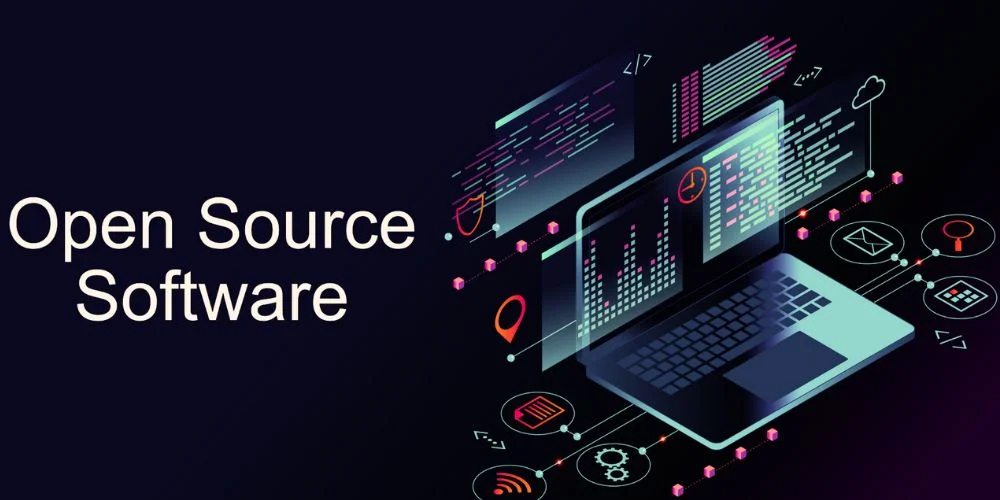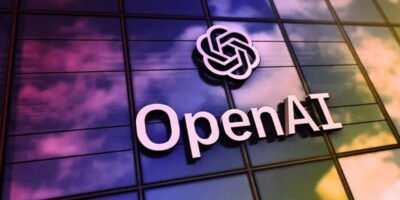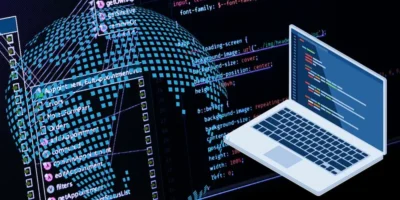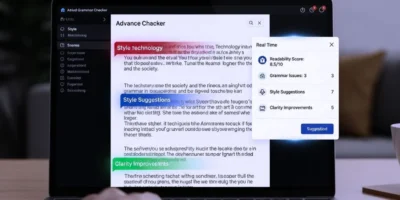In the hyper-accelerated, multi-trillion-dollar world of global technology, a quiet and irreversible revolution has taken place. The foundational layer upon which nearly every modern digital innovation is built is no longer the proprietary, closely guarded code of a few corporate giants. It is a vast, collaborative, and globally distributed commons of code, an unseen empire built not on walls and secrets, but on transparency and sharing. This is the world of Open Source Software (OSS), and in 2025, it is no longer a fringe movement or a viable alternative; it is the undisputed, default, and dominant paradigm for software development.
The story of OSS growth has been a relentless, decades-long march from the periphery to the very center of the technological universe. But the story of its growth and adoption in 2025 is a story of a new phase of maturation. This is not just about more developers contributing to more projects; it is about a deepening of the strategic, economic, and even geopolitical importance of the open-source ecosystem. In 2025, the conversation has shifted from whether to use open source to how to use it strategically, how to secure it at an industrial scale, and how to participate responsibly in the communities that create it. From the AI revolution being built on open frameworks to the future of the cloud being defined by open standards, the growth and adoption of OSS in 2025 is a story of an ecosystem grappling with its own immense success, facing down its new and complex challenges, and solidifying its role as the permanent and indispensable engine of global innovation.
The Irreversible Default: Why Open Source Became the Bedrock of Modern Software
To understand the trends of 2025, we must first reaffirm the powerful, foundational “why” behind the open-source model’s triumph. The dominance of OSS is not an accident of history; it is the result of a superior development methodology that has delivered tangible, overwhelming advantages that the proprietary model cannot match.
These core benefits have created a powerful, self-reinforcing flywheel, making open-source adoption an economic and strategic inevitability.
The Unbeatable Economics of Innovation
At its core, the adoption of OSS is a story of powerful economic incentives.
- Dramatically Reduced Development Costs: The ability to build upon a vast, pre-existing library of high-quality, battle-tested open-source components is the ultimate accelerant. It allows a startup to build a new product without having to “reinvent the wheel,” saving millions of dollars in engineering costs and dramatically speeding up the time-to-market.
- Focus on Differentiating Value: By leveraging open source for the “plumbing”—the operating systems, databases, web servers, and frameworks—companies can focus their scarce, expensive engineering talent on the unique, high-value, and proprietary features that actually differentiate their products in the marketplace.
The Superior “Bazaar” Model of Development
The open, collaborative model of OSS development, famously dubbed the “bazaar” by Eric S. Raymond, has proven more effective than the closed, “cathedral” model of proprietary development for building high-quality, secure, and innovative software.
- Higher Quality and Reliability (“Linus’s Law”): The principle that “given enough eyeballs, all bugs are shallow” has been proven time and time again. The intense, global peer review that happens in a major open-source project leads to more robust, reliable, and bug-free code.
- Accelerated Innovation: Open source projects attract a diverse, global community of passionate experts. This “cognitive surplus” is a powerful engine of innovation, enabling ideas to be debated, refined, and implemented at a pace difficult for a single corporate entity to match.
- Transparency and Security: The transparency of open source, while seemingly counterintuitive, often leads to more secure software. The ability for security researchers from around the world to scrutinize the code for vulnerabilities creates a much more rigorous security audit than is possible in a closed-source, “security through obscurity” model.
The Strategic Imperative: Avoiding Vendor Lock-in and Building Ecosystems
For enterprises, one of the most powerful drivers of OSS adoption is the strategic desire to avoid vendor lock-in.
- The Freedom to Choose: By building on open-source software and open standards, a company retains the freedom and flexibility to switch its underlying vendors (such as its cloud provider or hardware supplier) without having to completely re-architect its entire software stack.
- The Power of the Ecosystem: For the tech giants, strategically open-sourcing their own technologies has become the primary way to build a massive ecosystem and to establish their technology as a de facto industry standard, as Google did with Android and Kubernetes.
This combination of economic, technical, and strategic advantages has made OSS the bedrock. The key trends of 2025 are not about questioning this foundation, but about what is being built on top of it and how the foundation itself is being fortified.
Trend 1: The Industrialization of Open Source Security – The Post-Log4Shell Era
The single most dominant and consequential trend in the open-source world of 2025 is the intense, industry-wide focus on software supply chain security. The “Log4Shell” vulnerability in late 2021 was a cataclysmic event —a “heart attack” for the internet — that brutally exposed the dark side of our collective reliance on open source.
That single vulnerability in a single, ubiquitous, and under-maintained Java logging library sent a shockwave of panic through the entire global economy. It was a wake-up call of historic proportions, and the years since have been defined by a massive, coordinated effort to “industrialize” the security of the open-source commons.
The New Security-First Mindset
In 2025, open source security is no longer a niche concern for the cybersecurity team; it is a C-level and board-level priority and a non-negotiable part of the software development lifecycle.
This has led to the widespread adoption of a new generation of tools and best practices.
- Software Composition Analysis (SCA) is Ubiquitous: SCA tools that automatically scan a codebase to identify all its open-source components and their known vulnerabilities are no longer optional. They are mandatory automated gates in every CI/CD pipeline.
- The Rise of the SBOM (Software Bill of Materials): The SBOM has moved from a “nice-to-have” to a legal and contractual necessity. An SBOM is a formal, machine-readable “ingredients list” for a piece of software that details all its open-source components and their dependencies. Following a U.S. Executive Order, the requirement to provide an SBOM is now standard for selling software to the U.S. government, and the private sector has widely adopted this practice as a critical tool for transparency and vulnerability management.
- A Focus on Provenance and Integrity (SLSA and Sigstore): It is no longer enough just to know what is in your software; you need to know that it is what it claims to be and hasn’t been tampered with. This has led to the rise of new frameworks and technologies:
- SLSA (Supply-chain Levels for Software Artifacts): SLSA (pronounced “salsa”) is a security framework —a checklist of standards and controls that establishes a “chain of custody” for a software artifact, providing an increasing level of confidence in its integrity.
- Sigstore: Sigstore is a new, open-source standard for digitally signing and verifying software releases. It is becoming the “Let’s Encrypt for software signing,” making it easy and free for open-source projects to sign their code and prove its authenticity cryptographically.
The “Securing the Commons” Movement: A New Era of Corporate Responsibility
The Log4Shell crisis highlighted the “tragedy of the commons”—the fact that the entire digital world was dependent on a handful of unpaid volunteers to maintain a critical piece of infrastructure.
In 2025, there is a powerful, well-funded movement, driven by tech giants and national governments, to take collective responsibility for the health of the open-source ecosystem.
- The Open Source Security Foundation (OpenSSF): The OpenSSF, a project of the Linux Foundation, has become the central, multi-stakeholder hub for this effort. Backed by billions of dollars in pledges from companies such as Google, Microsoft, and Amazon, the OpenSSF is funding a wide range of initiatives to improve the security of the most critical open-source projects.
- Key Initiatives: This includes funding security audits for critical projects, providing free security tools and training for open-source maintainers, and developing new tools, such as the “Alpha-Omega Project,” to systematically identify and fix vulnerabilities in the long tail of open-source software.
Trend 2: The Open-Source AI Revolution – The Democratization of Intelligence
If security is the dominant “push” factor shaping OSS in 2025, then Artificial Intelligence is the dominant “pull” factor. The generative AI explosion of the past few years would have been impossible without open source, and in 2025, the open-source AI ecosystem is entering a new and even more explosive phase of growth.
The story of AI in 2025 is a fierce, healthy competition between the massive, closed, proprietary models from companies like OpenAI and Google and a vibrant, rapidly evolving ecosystem of open-source models.
The Rise of High-Quality, Open-Source Large Language Models (LLMs)
For a time, it seemed that only a handful of tech giants would have the resources to build state-of-the-art LLMs. That has changed dramatically.
In 2025, there is a Cambrian explosion of powerful, open-source LLMs that are beginning to rival the performance of their closed-source counterparts, at least for specific tasks.
- The Impact of Meta’s Llama 2 (and its successors): Meta’s release of its Llama family of models, under a relatively permissive license, was a watershed moment. It provided a high-quality, foundational model that the global open-source community could build upon.
- The Proliferation of Specialized Models: The open-source community, with hubs like Hugging Face, is now taking these foundational models and “fine-tuning” them to create a huge number of smaller, more specialized models optimized for specific tasks (like code generation, summarization, or conversational AI in a specific language).
- The “Small Model” Renaissance: A major trend is the focus on smaller, more efficient open-source models (e.g., in the 7-billion-to-70-billion-parameter range, rather than the trillion-plus-parameter range of the largest closed models). These “small” models are much cheaper to run and can be deployed on-premise or even on edge devices, giving companies more control over their data and their costs.
The Open-Source AI Stack is Becoming the Default
Beyond the models themselves, the entire toolchain for building and deploying AI applications is overwhelmingly dominated by open source.
This open-source “AI stack” is democratizing access to AI tools worldwide.
- The Foundational Frameworks: The deep learning revolution was built on Google’s TensorFlow and Meta’s PyTorch, both of which are open source.
- The Orchestration Layer: Training and deploying AI models at scale is a massive distributed systems problem. Kubernetes and its ecosystem of open-source tools (such as Kubeflow) have become the de facto standard for orchestrating complex AI workloads.
- The Data and Tooling Ecosystem: The entire supporting ecosystem, from the vector databases needed for RAG (such as Chroma and Weaviate) to the data processing frameworks (such as Apache Spark) and the experiment-tracking tools (such as MLflow), is a vibrant world of open-source innovation.
The Business Implications of Open-Source AI
The rise of open-source AI is a massive strategic opportunity for businesses.
- Avoiding “AI Lock-in”: It provides a powerful alternative to being locked into a single proprietary model provider’s API, giving companies more control, flexibility, and negotiating leverage.
- Customization and Control: Open-source models can be fine-tuned on a company’s proprietary data, in its private cloud, or on-premises environment. This allows the creation of highly customized models tailored to a specific business domain and provides a much higher degree of data privacy and security.
Trend 3: The Deepening of Cloud-Native and the Rise of Platform Engineering
The world of cloud infrastructure continues to be a story written in open source. The Cloud Native Computing Foundation (CNCF) is now one of the most vibrant and influential open-source ecosystems in the world, and its flagship project, Kubernetes, is the undisputed “operating system for the cloud.”
In 2025, the trend is to move “up the stack” and build a new layer of abstraction and usability on top of this powerful but complex foundation, a movement known as Platform Engineering.
Kubernetes as the “Dull” Foundation
Kubernetes has won. It is now considered a “solved problem,” a piece of foundational, “dull” infrastructure, much like the Linux kernel. The new wave of innovation is not in Kubernetes itself, but in the vast ecosystem of open-source tools that run on top of it.
The Open-Source Internal Developer Platform (IDP)
As we have seen, Platform Engineering is about building an Internal Developer Platform (IDP) to shield application developers from the underlying complexity of Kubernetes.
In 2025, the construction of these IDPs will be dominated by open-source tools.
- Backstage: The De Facto Standard for the Developer Portal: Backstage, the open-source project created by Spotify and now a CNCF project, has become the standard “front-end” for the IDP. It provides a single, unified web portal where developers can access all the tools and resources they need, from creating a new service from a template to viewing their observability dashboards.
- The Rise of GitOps with Argo CD and Flux: The GitOps model, where a Git repository serves as the single source of truth for the system’s desired state, has become the dominant paradigm for continuous delivery in the Kubernetes world. The two leading open-source projects that enable this, Argo CD and Flux, are both thriving CNCF projects.
The Open Source Service Mesh and Observability Stack
The management of complex microservices architectures is also being driven by open source.
- The Battle of the Service Meshes: The service mesh—a dedicated layer for managing service-to-service communication—is a hotbed of open-source innovation. The two leading projects, Istio and Linkerd, continue to evolve, providing critical capabilities for security, traffic management, and observability.
- OpenTelemetry as the Standard for Observability: The world has converged on OpenTelemetry (OTel), another major CNCF project, as the single, vendor-neutral standard for instrumenting applications to generate the logs, metrics, and traces that are the foundation of modern observability.
Trend 4: The Changing Business and Licensing Landscape – A New Era of “Pragmatic” Open Source
The immense commercial success built on open source has also created new tensions and significant evolution in the business and licensing models that underpin the ecosystem. The old, purely idealistic vision of “free software” is giving way to a more pragmatic — and sometimes more contentious — reality.
The “Cloud Wars”: Open Source vs. the Hyperscalers
The biggest source of tension in the open-source world of 2025 is the complex relationship between the open-source companies and the large public cloud providers (the “hyperscalers”), particularly AWS.
- The “Strip-Mining” Accusation: Many open-source companies that have built their business on a “hosted service” model have accused the hyperscalers of “strip-mining” their projects. The cloud providers will take a popular open-source project (like Elasticsearch or MongoDB), offer their own fully managed, commercial version, and capture the vast majority of the economic value, often without contributing a proportional amount back to the original open-source project.
- The Rise of the “Source Available” License: In response to this threat, several prominent open-source companies have controversially moved away from true, OSI-approved open-source licenses. They have adopted a new class of more restrictive “source available” licenses, like the Business Source License (BSL) or the Server Side Public License (SSPL). These licenses make the source code available but place specific restrictions on its use, typically prohibiting the cloud providers from offering it as a commercial service. This has created a major schism and a fierce debate within the community about the true definition and the future of open source.
The Growing Influence of Corporate-Backed Foundations
As open source has become a critical part of corporate strategy, we are seeing a shift in the governance of many major projects.
There is a strong trend towards moving important projects into neutral, non-profit foundations such as the Linux Foundation, the Apache Software Foundation, or the CNCF.
- The Benefits of Neutral Governance: A foundation provides a neutral, vendor-agnostic home for a project. It establishes a clear governance structure, manages the project’s intellectual property, and provides a forum where a diverse community of contributors, including direct competitors, can collaborate on a level playing field.
- Corporate Influence: While this provides stability, it also means that the strategic direction of many of the most important open-source projects in the world is now heavily influenced by the large corporate sponsors that fund these foundations and provide the majority of the developer contributions.
Trend 5: Open Source Beyond Software – The Open Hardware and Open Data Movements
The powerful, collaborative principles of the open-source movement are now being successfully applied to other domains beyond software, creating new and exciting ecosystems of innovation.
The Rise of Open Hardware
The open hardware movement is about creating physical devices whose design files are publicly available, allowing anyone to study, modify, manufacture, and distribute them.
- RISC-V: The Open Standard for Processors: The most significant development in this space is RISC-V (pronounced “risk-five”). RISC-V is an open-source instruction set architecture (ISA) for computer processors. It is a direct and powerful alternative to the proprietary, licensed ISAs from ARM and Intel (x86). A global non-profit foundation manages the RISC-V standard, allowing anyone—from a university researcher to a startup or a tech giant—to design their own custom processors without paying a licensing fee. In 2025, RISC-V is seeing a massive surge in adoption, particularly in embedded systems, IoT, and the data center. It is at the center of the geopolitical tech competition, as it offers countries like China a path to build a domestic processor industry that is not dependent on Western technology.
- The Open Compute Project (OCP): Started by Facebook (Meta), the OCP is a collaborative community that is focused on redesigning data center hardware to be more efficient, scalable, and open. The OCP community openly shares the designs for servers, storage, and networking equipment, which has led to a commoditization and a new wave of innovation in the data center hardware market.
The Growing Importance of Open Data
The open data movement holds that certain datasets, particularly those generated by governments and publicly funded research, should be made freely available for everyone to use and republish.
In the age of AI, access to large, high-quality datasets is the essential fuel for innovation, making the open data movement more important than ever.
- Open Government Data: Governments around the world are launching open data portals, providing free access to a huge range of data, from weather and traffic data to census and financial data.
- Open Scientific Data: Large-scale scientific projects, such as the Human Genome Project and the Large Hadron Collider, are built on the principle of open data sharing, which has dramatically accelerated the pace of scientific discovery.
Conclusion
The growth and adoption of open-source software in 2025 is a story of an ecosystem that has achieved a level of success and influence that its early pioneers could have only dreamed of. The debate is over. The world runs on open source. But this victory has brought with it a new and far more complex set of responsibilities and challenges.
The key themes of 2025 are maturation, industrialization, and a move towards a more pragmatic and strategic form of engagement. The security of the open-source supply chain has been elevated from a technical concern to a global economic and national security imperative, unleashing a massive, coordinated effort to fortify the digital commons. The AI revolution is being built in a fierce, open, and collaborative battle between proprietary and open-source models, a competition that is driving innovation at an unprecedented rate. And the very business and licensing models that underpin the open-source economy are being stress-tested and evolving in response to the immense commercial value now at stake.
For any company operating in the technology world of 2025, the message is clear. Consuming open source is no longer enough. The future belongs to those who become active, strategic, and responsible participants in the open-source ecosystems that are now the very foundation of their business. It is about contributing back to the projects they depend on, helping to secure the supply chain they are a part of, and mastering the complex art of building a sustainable business on an open foundation. The unseen empire of open source is no longer a silent partner; it is an active, dynamic arena where the future of technology is being forged.













